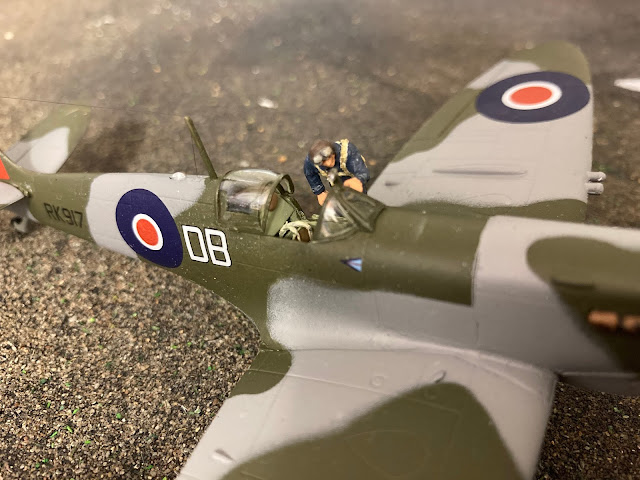On being liberated from Colditz on 16th April 1945, after three and a half years as a POW, Douglas Bader was itching to get back into combat, but when just 3 weeks later, on on 8th May 1945, Victory in Europe was declared, any opportunity that there may have been slipped away. Although the war against Japan was still stubbornly unresolved, and an RAF contingent known as Tiger Force was being prepared for operations against the enemy in the Pacific, the atomic bombs were to bring an end to the war before the Tiger Force never became operational.
After resting and recuperating, Bader was posted to his old station at Tangmere, with the rank of Group Captain, to command the Fighter Leaders’ School of the Central Fighter Establishment under Air Commodore Richard Atcherley, who had served with Douglas in 23 Squadron at Kenley in 1930. The appointment did not go well.
Bader, was completely out of touch with the air fighting tactics that came into force at the war’s end; tactics which, among other things, had seen fighter aircraft used increasingly in the ground-attack role. The aircraft being flown had also changed dramatically since his incarceration; even the Spitfire now in service was far removed from his Spitfire Mk.V in which he had crashed over France and many squadrons were now being equipped with the new fangled Gloster Meteor jets! Bader was, therefore, reassigned to command the North Weald sector of 11 Group, giving him control over twelve fighter squadrons based on six airfields and opportunity to organise probably the most spectacular flypast ever flown.
Battle of Britain 5th Anniversary Flypast
15 September 1945 was a day of great nostalgia for Bader as thousands crammed the streets of London, their eyes turned towards the sky, for the anniversary of the greatest air battle over the capital five years earlier.
 |
| Bader prepares to lead the flypast |
Group Captain Douglas Bader had been chosen to organise a flypast of twenty squadrons and around 300 aircraft. The air armada was led by twelve Spitfires, each flown by a Battle of Britain veteran and out front, in the very first ‘vic’ of Spitfires, was Bader.
They assembled over Bader's base at North Weald and followed a route that took them in formation over Barking, West Ham, the East India Docks, Hyde Park, Northolt, Ruislip, Elstree, Walthamstow, Greenwich, Wimbledon, Teddington, Brent Reservoir and finally back to North Weald, where they dispersed to their home airfields. They swept across the capital under low cloud, the sky filled with the massed thunder of their engines.
Douglas Bader's Spitfire Mk.IXe RK917
This final of my 4 aircraft tribute to Douglas Bader is the Spitfire Mk.IX which he flew when he led this 5th anniversary fly-past over Central London to commemorate the Battle of Britain, September 15th 1945.
Bader adopted RK917 as his personal aircraft while in command of the North Weald sector. As such it differed in markings, equipment and weaponry in comparison to other of the squadrons' aircraft.
What's interesting about RK917's markings were that for some reason the outer yellow ring of an otherwise standard Type C1 fuselage roundel had been over painted in blue, resulting in the incorrect ratio of the outer blue ring in proportion to the red and white of the roundel. In addition to the non-standard fuselage roundels was added the custom DB codes in white with a black outline.
May be, RK917 was freshly painted for the flypast, the paint in archive pictures certainly look new and clean and perhaps the colours are so odd might have been to make his aircraft more easily visible during the formation assembly ready for the flight over London. Who knows!








